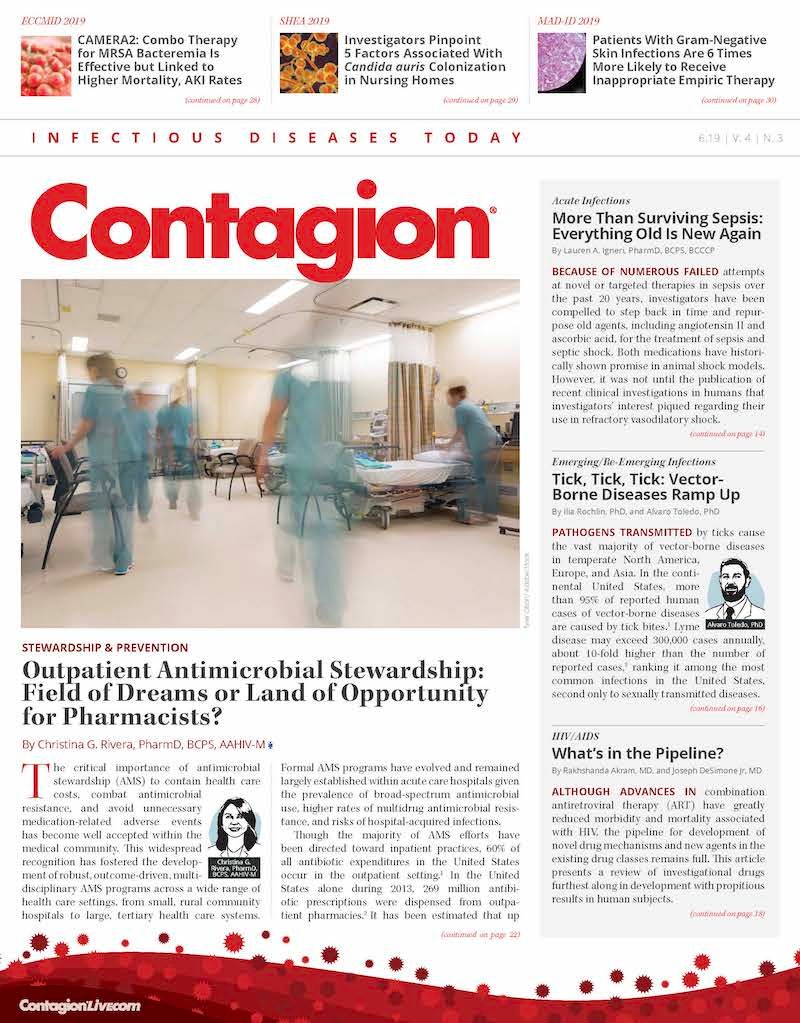Daptomycin Dosing in Obesity: Consideration for a Fixed-Dose Strategy
This In the Literature piece considers a fixed-dose strategy for administering daptomycin in obese patients.
Highlighted Study:
Butterfield-Cowper JM, Lodise TP, Pai MP. A fixed versus weight-based dosing strategy of daptomycin may improve safety in obese adults. Pharmacotherapy. 2018;38(9):981-985. doi: 10.1002/phar.2157.
Daptomycin is an important antibiotic with action against methicillin-resistant Staphylococcus aureus (MRSA) and vancomycin-resistant Enterococci (VRE). Per the US Food and Drug Administration labeling, daptomycin is recommended to be dosed based on total body weight (TBW). This involves pharmacokinetic assumptions, including that clearance (CL) and volume of distribution (Vd) change proportionately with TBW—making TBW dosing appropriate in obese patients. If CL doesn’t change proportionately in obese patients, a higher drug exposure can result. Currently varied recommendations for dosing go beyond the labeled 4 to 6 mg/kg/TBW dosing, up to 10 to 12 mg/kg/TBW.1 There is also literature that debates the correct weight that should be used for dosing, with some arguing for ideal body weight2 and others supporting an adjusted body weight in obese patients.3
Butterfield-Cowper et al aimed to determine whether weight-based daptomycin dosing results in the same exposures in obese and nonobese patients.4 The investigators used serum level data from a prior study to build pharmacokinetic models and a Monte Carlo simulation.
In a prior study, 7 patients were given a 4 mg/kg dose of daptomycin, with 8 serum samples taken 0.5 hours through 24 hours after dosing.5 This study analyzed those samples in a population pharmacokinetic (PK) model, stratifying by obese and nonobese patients. A 2-compartment model was used, with zero-order infusion and first-order elimination from the central compartment. The median PK estimates were compared (morbidly obese vs nonobese), and linear regression was used to find the association between the daptomycin CL and Vd and TBW.
A Monte Carlo simulation was used to model 2 doses, 6 mg/kg TBW/day and 500 mg/day, from which the steady-state area under the curve (AUC0-24ss), maximum concentration (Cmax), and minimum concentration (Cmin) were determined.
For the PK analysis, obese and nonobese patients were well matched at baseline. Although differences were not found for CL, Vd, and terminal half-life, differences were detected in intercompartmental transfer rate constants, which were higher in the morbidly obese. Given that the rates were the same, because the Vd and CL did not change proportionally with weight, the obese patients would have higher drug exposure. To look at the drug exposure, the investigators used a Monte Carlo simulation.
For the Monte Carlo simulation, with the use of TBW dosing, the AUC0-24ss, Cmaxss, and Cminss were 2-fold higher in morbidly obese patients compared with nonobese patients. The fixed-dose modeling showed similar AUC0-24ss, Cmaxss, and Cminss between the groups. The study also looked at how the modeled dosing resulted in Cminss over 24.3 mg/L, levels that were previously associated with creatine kinase elevation. The weight-based dosing exceeded 24.3 mg/L 10.8% of the time but just 2% in the fixed-dose model.
This is not the first study to identify higher daptomycin exposure in obese patients. Previously, it was shown that daptomycin dosing on actual body weight gave ~50% to 60% higher exposure in obese patients, which is similar to the 2-fold increased exposure seen in this present study.6 Studies that have examined the differences in exposure do have differences in how they control for renal function and other patient characteristics, making an apples-to-apples comparison between the findings difficult. What does appear to be consistent is that TBW dosing in obesity leads to increased exposure. Although therapeutically, we are pushing daptomycin doses higher and higher (>10 mg/kg TBW for VRE and MRSA), there can be concerns that the safety versus efficacy balance is affected.7
Prior daptomycin studies also called into question the safety of daptomycin dosing in obese patients, with a more recent study identifying obesity (BMI >40) as an independent risk factor for myopathy and rhabdomyolysis.8
Overall, although this study does not set a recommended fixed dose for obese patients, it does find that a fixed dose has merit for keeping drug exposure and safety profiles in obese patients similar to those of normal-weight patients. As daptomycin doses continue to be pushed for the sake of efficacy, studies for dosing strategies will need to keep pace and continue to fill the literature void.
Lusardi is the infectious diseases/antimicrobial stewardship pharmacist at the University of Arkansas for Medical Sciences (UAMS) Medical Center, a position she has held since 2011. Prior to UAMS, she completed a PGY-2 Infectious Diseases Residency at University of Houston/Cardinal Health. She is an active member of ACCP, especially the ID-PRN, and also involved in local state-level pharmacy organizations.*Lusardi is a member of the Society of Infectious Disease Pharmacists
References:
- Liu C, Bayer A, Cosgrove SE, et al. Clinical practice guidelines by the Infectious Diseases Society of America for the treatment of methicillin-resistant Staphylococcus aureus infections in adults and children. Clin Infect Dis. 2011;52(3): e18-e55. doi: 10.1093/cid/cir034.
- Ng JK, Schulz LT, Rose WE, et al. Daptomycin dosing based on ideal body weight versus actual body weight: comparison of clinical outcomes. Antimicrob Agents Chemother. 2014;58(1):88—93. doi: 10.1128/AAC.01018-13.
- Fox AN, Smith WJ, Kupiec KE, et al. Daptomycin dosing in obese patients: analysis of the use of adjusted body weight versus actual body weight. Ther Adv Infectious Dis. 2019;6:1-10. doi: 10.1177/2049936118820230.
- Butterfield-Cowper JM, Lodise TP, Pai, MP. A fixed versus weight-based dosing strategy of daptomycin may improve safety in obese adults. Pharmacotherapy. 2018;38(9): 981-985. doi: 10.1002/phar.2157.
- Pai MP, Norenberg JP, Anderson T, et al. Influence of morbid obesity on the single-dose pharmacokinetics of daptomycin. Antimicrob Agents Chemother. 2007;51(8): 2741-2747. doi: 10.1128/AAC.00059-07.
- Dvorchik BH, Damphousse D. The pharmacokinetics of daptomycin in moderately obese, morbidly obese, and matched nonobese subjects. J Clin Pharmacol. 2005;45(1):48-5 doi: 10.1177/0091270004269562
- Britt NS, Potter EM, Patel N, Steed ME. Comparative effectiveness and safety of standard-, medium-, and high-dose daptomycin strategies for the treatment of vancomycin-resistant enterococcal bacteremia among veterans affairs patients. Clin Infect Dis. 2017;64(5):605-613. doi: 10.1093/cid/ciw81.
- Dare RK, Tewell C, Harris B, et al. Effect of statin coadministration on the risk of daptomycin-associated myopathy. Clin Infect Dis. 2018;67(9):1356-1363. doi: 10.1093/cid/ciy287.



















